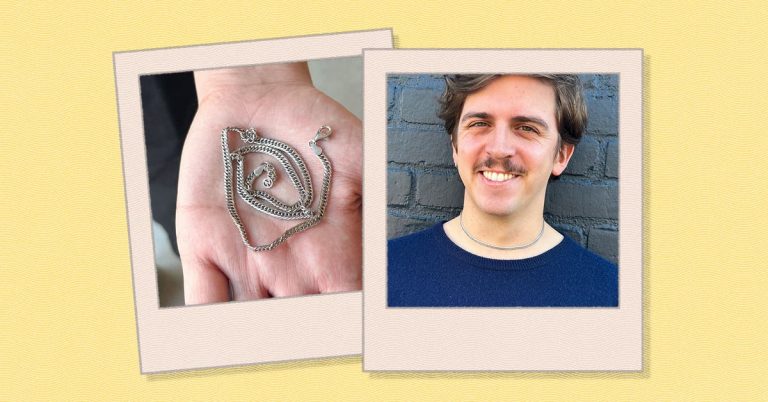The 3 Best 4K Blu-ray Player for 2025

Top pick
Among the dwindling pool of affordably priced 4K Blu-ray players, the Panasonic DP-UB820 stands out as the most sensible investment for the cinephile who wants the best movie experience at home. Although this player’s roughly $500 price tag doesn’t paint it as an impulse buy, the UB820 is still much more affordable than high-end enthusiast models, while also delivering exceptional audio and video quality for 4K Blu-ray discs, traditional Blu-ray discs, DVDs, and CDs.
You’re getting the best video presentation in this price range. The UB820 supports all of the major HDR formats, including Dolby Vision and HDR10+. (You can learn more about these formats in our TV buying guide.) It also utilizes a useful feature called HDR Optimizer, which can improve the HDR image on lower-brightness displays.
During our ultrawide comparison testing on the same screen, the DP-UB820 wasn’t miles ahead of the competition, but it did provide the best general playback quality. When making comparisons using the latest Spears & Munsil UHD HDR benchmark discs, the UB820 proved to be better calibrated than players like the Sony UBP-X700M and Xbox Series X—offering just slightly better detail preservation in shadows and highlights.
This benchmark testing held up with real-world content, too: I watched sections of Terminator 2 and Hot Fuzz on 4K Blu-ray disc, comparing the UB820 with other disc players. Though their presentation was identical much of the time, there were some scenes in which the UB820’s detail preservation provided better images.
For example, during the opening “Give me your clothes, your boots, and your motorcycle” bar scene in Terminator 2, the UB820 better preserved the high-brightness details in the bar’s neon signage.
HDR Optimizer is the real difference-maker. This feature allows you to broadly adjust the player’s luminance emphasis while watching HDR video. In other words, it allows you to select between several presets that alter the general emphasis of shadow tones or brighter highlights on HDR discs, with the aim of making that content look better on your specific TV.
Most 4K Blu-ray discs are currently mastered at either 1,000 or 4,000 nits of brightness, on monitors that are much brighter than your TV at home. Many consumer-oriented 4K TVs can’t reach 1,000 nits—and none of them can reach 4,000 yet. So it’s likely that the TV you own will benefit from the HDR Optimizer feature.
If the Xbox Series X or Sony UBP-X700M had this feature, I maybe could have used it to reveal the somewhat-blown-out details I mentioned above, during the opening bar scene of Terminator 2. Alas.
HDR Optimizer can also be useful for simply adding brightness in general. My living-room OLED TV is situated between a large bay window and a sliding glass door. And during the brightest part of the day, its Movie picture mode is sometimes not quite bright enough during shadowy scenes. Rather than changing to a less accurate picture mode, I was able to use the HDR Optimizer feature to simply raise the average picture level (the general brightness of the whole screen), achieving a better balance between accuracy and visibility.
And because HDR Optimizer lets you select whether your TV is an LCD or an OLED TV, you can tailor it to achieve a better viewing experience, even if your TV is technically bright enough. This feature alone is enough to put the UB820 ahead of the competition.
Just note that if you have the wrong type of TV selected in the UB820’s menu, HDR Optimizer could end up making the picture look worse. When set to LCD, it raised the black level of my OLED TV and drastically reduced its screen contrast. You also may have to change it around, depending on the time of day or degree of ambient lighting, but the end result is worth the extra effort.

Dolby Vision is an almost required feature these days. When we originally tested these players several years ago, it was easy to pick the more affordable UB420 over the pricier UB820: One reason the latter costs a good deal more is because it’s capable of Dolby Vision playback, but Dolby Vision wasn’t widely available at that time.
Nowadays, most TVs—even entry-level 4K TVs—are capable of Dolby Vision playback. Of the major TV brands, only Samsung has refused to adopt Dolby Vision, instead implementing its own dynamic HDR format called HDR10+ (which the UB820 is also compatible with).
Because it’s more likely than not that your TV supports Dolby Vision—and because Dolby Vision is available on a majority of Ultra HD Blu-ray discs these days—this has become a key feature for 4K Blu-ray players, and the UB820’s support of it means it’s better situated than ever to provide the best video experience.
Your TV may be 4K, but your discs don’t have to be. Another change to the TV industry over the past several years is the sheer ubiquity of TVs with a 4K resolution. You’ll have trouble tracking down a TV larger than 50 inches that’s still limited to HD or full-HD resolution.
Compared with the competition, both of our Panasonic picks in this guide do a better job of upscaling sub-4K discs (such as standard Blu-rays and DVDs), which helps to ensure that any older discs you own will still look their best.
Even though Blu-ray discs offer vastly higher-bitrate transfers compared with streaming services, they must still compress color (chroma) details to a degree, and your 4K Blu-ray player has to re-create those details while also upscaling the image to higher than its native resolution. If you’ve ever tried to stream older content on an entry-level 4K TV and thought it looked atrocious, it’s because your TV isn’t equipped with a good-enough upscaler.
The UB820 is miles ahead of the average TV at doing this job, and both of our Panasonic picks handle DVDs and standard Blu-rays better than most of the competition.
The UB820 has the features we look for—and even some we don’t. It crucially includes two HDMI outputs: one for both video and audio, and one for audio-only (if you need to reroute audio to an older AV receiver that doesn’t pass 4K HDR signals). It’s also equipped with an ethernet (LAN) port and 802.11ac Wi-Fi for network connectivity.
In addition to supporting audio output via HDMI, the UB820 is capable of direct 7.1-channel audio playback (meaning it can route surround audio directly to your speakers/woofer via RCA cables), and it has an optical audio out (useful for older TVs or soundbars). And it even plays 3D Blu-rays, an admittedly niche category these days but one that some enthusiasts still desire.
It’s also equipped with two USB inputs (a 5-volt one in front, beneath the disc tray, and a hard-disc-drive-capable one, on the back) for high-res audio playback, including FLAC and DSD files.
Flaws but not dealbreakers

This player won’t double as a media streaming device. This player’s ideal use is for disc playback. But it’s also impractical to expect to buy a physical copy of every movie or TV show you might want to watch. Eventually you’re gonna want to stream something.
Unfortunately, the UB820 simply isn’t a great choice for streaming. For one thing, its app selection is extremely limited by modern standards (you get only Netflix, Prime Video, and YouTube). And its Wi-Fi protocol isn’t quite as strong as what you’ll find in some dedicated media streaming devices or even your TV’s built-in smart platform—especially when it comes to streaming 4K HDR content.
The remote is just okay. It has lots of small buttons and no backlighting, so it’s hard to use in the dark. It may also take time to learn which button you need to hit during playback (Option, Pop-Up Menu, HDR Setting, and the like) to adjust a setting.
The remote is fine once you learn your way around it, but it could be better, considering the UB820’s asking price.
The UB820’s chassis is mostly plastic. Having used the UB820 alongside the Sony UBP-X700M, I was surprised to note that the latter has a sturdier and more durable build quality than the pricier UB820.
So even though the UB820 looks good in an entertainment center, those with kids may want to set it up higher or tucked into a closed cabinet, as an errant kick could be bad news.







